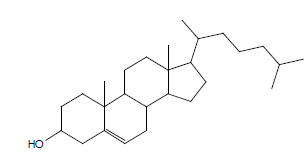Purity and Recrystallization, Cholesterol
Sample
Cholesterol, various degrees of purity > 99% und > 95%
Application
Flavoring agent
Conditions
Measuring cell: DSC820
Pan: Aluminum 40 µl, hermetically sealed
Sample preparation: The sample was pressed down in the pan with a PTFE rod. The sample with the stated purity of >95% was purified by recrystallizing 3 times from methanol.
DSC measurement: Heating from 120 °C to 170 °C at 2 K/min
TGA measurement: Heating from 30 °C to 250 °C at 10 K/min, blank curve corrected
Atmosphere: Air, stationary environment, no flow
Interpretation
The diagram shows the melting curves of the three samples. The purities are evaluated using the purity determination according to van't Hoff. As an example, the detailed evaluation is described for one of the samples.
The purities determined are almost identical and are (also for the sample >95%) better than the manufacturer's specification. In this connection, it should be noted that DSC can only measure eutectic impurities, so that other impurities remain undetected.
Evaluation
Evaluation of the purity between 10% and 50 % of the peak height with baseline type ‘line’.
| Sample | Purity, mole % | Onset, °C | Weight, mg |
|---|---|---|---|
| Cholesterol A (purity >99%) | 99.85 | 148.8 | 11.08 |
| Cholesterol B (purity >95%) | 99.51 | 147.5 | 10.80 |
| Cholesterol C recrystallized | 99.87 | 148.4 | 5.41 |
Conclusion
Products can be purified by recrystallization. The degree of purification can be quantified with a DSC purity determination, provided that we are dealing with a eutectic impurity.
Purity and Recrystallization, Cholesterol | Thermal Analysis Application No. HB835 | Application published in METTLER TOLEDO TA Application Handbook Pharmaceuticals